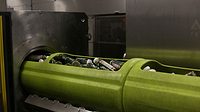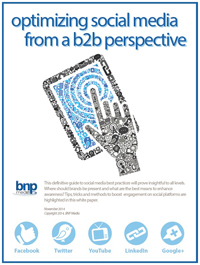Improving a new product’s shelf esteem
Placement, pricing are key factors to launch success

One of the keys to success can be as simple as: “location, location, location.” For developers of new beverages, the phrase is not as cliché as it sounds. Not only are consumers shopping across more channels than ever, retailers are offering more spaces for beverages, too.
For some beverage companies, retail placement is an integral issue to consider during product development. When Living Essentials was creating its 5-Hour Energy shot, the company realized the challenges of the beverage space, Manoj Bhargava, founder and chief executive officer of the company, explained in last month’s Beverage Industry cover story.
“We figured out how to make it, it works, and then we looked at the beverage space and I thought, ‘You’re going to fight for cooler space with Budweiser and Coke?’ That’s not a good idea,” Bhargava says. “Then I also thought, ‘It’s an energy product, but why do you have to be thirsty and tired at the same time?’ It didn’t make any sense. So for that we said, ‘Let’s make it small.’”
The company found the compact size of the product also benefited its retailers creating placement for the product near the check-out instead of in the cooler alongside larger beverage companies. Bhargava says that helped 5-Hour Energy compete for consumer purchase alongside candy, batteries and lighters.
The proliferation of consumer packaged goods (CPG) inspired Nielsen, New York City, to develop its new platform of 12 steps to new product success, which include two point-of-purchase concerns: “findability” and acceptable costs. “Findability” takes into consideration consumers’ ability to locate a product within a store.
“We know that beverages can be everywhere, especially when you think about single-serve beverages, so it starts very broadly at the outlet,” says Vicki Gardner, senior vice president of product innovation, North America for Nielsen. “Where do consumers think they’ll go to purchase this new product? Then, we actually ask them where in the store do they think they’ll find it because oftentimes there are multiple places in a store that you could locate your product. It could be something that’s in a nutritional aisle, it could be in a beverage aisle, it could be in an organic aisle — there are lots of different choices.”
During the development of its steps, Nielsen tracked 600 product launches and tested 20,000 initiatives. Its research showed that manufacturers and consumers might not always be on the same wavelength when it comes to product placement.
“Even in cases where it might seem clear to the manufacturer where it will be located, we might continued on page 8 have more than half the people saying, ‘No, I’m going to look in a different area of the store,’” Gardner says. “You know that the stores are big and consumers are not going to hunt too hard for you. They will look for you, but they are not going to spend 15 minutes trying three different locations. So if you’re not in the right spot where they expect to find you or where they’re making that purchase decision, then it’s almost like you don’t have distribution.”
Once a consumer has located a product in the store, and among competitors, he or she faces the idea of acceptable costs, Nielsen’s Gardner says.
“There are really two areas where we see acceptable costs: one is the absolute price point, this is the first time where they’ve been exposed to price because if they have been introduced to the item through some sort of advertising, they are interested and they are finding it in the store, it’s probably the first time they know what it’s going to cost,” Gardner says. “But then there are other elements, such as nutritional information, where they might flip the package over and say ‘Whoa, 1,000 calories! That’s not an acceptable cost to my waistline.’”
Consumers also are frequently shopping in many different channels. Last month, SymphonyIRI Group, Chicago, released its Times & Trends Report “Channel Migration: A Quest for Affordability,” which found that three-quarters of consumers shop across five or more channels to meet their shopping needs.
Consumers continue to exhibit habits developed during the beginning of the economic downturn, including frequenting value retailers. The market research firm reports that consumers continue to be conscious of affordability and many shoppers are learning to live with less and making purchases deliberately and cautiously. Grocery, drug, dollar and club stores are enjoying increased shopper visits at the expense of supercenter and mass stores, which is contradictory to behavior in the beginning of the downturn, SymphonyIRI says.
Many shoppers opt for quick trips and small “need it now” excursions in which they spend less than $40. Susan Viamari, editor of Times & Trends for SymphonyIRI, foresees convenience-minded consumers embracing new formats like CityTarget, which are smaller format stores located close to downtown areas. The switch might affect traditional formats in more out-of-the-way locations, Viamari says. BI
|
12-Step Program |
|
Companies spend on average $15 million on marketing for a new product launch, with some companies spending more than $60 million, and generally, new products have a 10 percent chance of succeeding, according to New York City-based market research firm Nielsen. The company’s 12 steps to new product success claim to improve the likelihood of new product success to 75 percent. The steps are divided into five main areas with key components within, which are as follows:
Salience: 1. Distinct proposition 2. Attention-catching
Communication: 3. Message connection 4. Clear and concise messaging
Attraction: 5. Product’s need/desire 6. Advantage 7. Credibility 8. Acceptable downsides
Point of purchase: 9. Findability 10. Acceptable costs
Endurance: 11. Product delivery 12. Product loyalty |
Looking for a reprint of this article?
From high-res PDFs to custom plaques, order your copy today!






